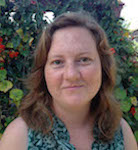
| |
| Home |
| Research |
| Publications |
| People |
| Teaching |
| Prospective Students |
| Links |
 |
Tory Hendry Postdoctoral Researcher (510) 643 5903 thendry@berkeley.edu |
|
About Me I am broadly interested in how host interactions shape the evolution and ecology of bacteria. I received my Ph.D. in Ecology and Evolutionary Biology from the University of Michigan in 2012, working with Paul Dunlap on the evolution of the luminous bacterial symbionts of flashlight fish. Since then, I have been a postdoctoral researcher with Dave Baltrus at University of Arizona and I am currently a USDA-NIFA Postdoctoral Fellow at the University of California, Berkeley. I am working with Nick Mills and Steve Lindow on a system of pathogenic interactions between the plant-associated bacterium Pseudomonas syringae, and plant and insect hosts. Current Research In addition to being a common plant pathogen, P. syringae is also a ubiquitous epiphyte on plant surfaces. It has recently been shown to grow to high numbers within some hemipteran insects, causing insect death. Insects may represent an important secondary niche and mode of dispersal for the bacteria. I use this tractable system to integrate data from genomic, experimental and field research to determine how complex host interactions shape bacterial populations, and how these interactions feedback to impact hosts. Website For more information about me or my research, please see my website. Selected Publications Hendry, T. A., M.S. Hunter, and D. A. Baltrus. (2014) The facultative symbiont Rickettsia protects an invasive whitefly against entomopathogenic Pseudomonas syringae strains. In press at Applied and Environmental Microbiology. Baltrus, D.A., T.A. Hendry, and K.L. Hockett. (2014) Ecological genomics of Pseudomonas syringae. In Genomics of plant-associated bacteria, D.C. Gross, A. Lichens-Park, C. Kole (Eds.). Springer.v Hendry, T.A. and P. V. Dunlap. (2014) Phylogenetic divergence between the obligate luminous symbionts of flashlight fishes demonstrates specificity of bacteria to host genera. Environmental Microbiology Reports, 6: 331–338. Hendry, T.A., J.R. de Wet, and P.V. Dunlap. (2014) Genomic signatures of obligate host dependence in the luminous bacterial symbiont of a vertebrate. Environmental Microbiology, 16: 2611–2622. Dunlap, P.V., M. Takami, S. Wakatsuki, T.A. Hendry, K. Sezaki, A. Fukui. (2014) Inception of bioluminescent symbiosis in early developmental stages of the deep-sea fish, Coelorinchus kishinouyei. Ichthyological Research, 61: 59-67. Hendry, T.A., and P.V. Dunlap. (2011) The uncultured luminous symbiont of Anomalops katoptron (Beryciformes: Anomalopidae) represents a new bacterial genus. Molecular Phylogenetics and Evolution, 61: 834-843. Urbanczyk, H., Y. Ogura, T.A. Hendry, A.L. Gould, N. Kiwaki, J.T. Atkinson, T. Hayashi, and P.V. Dunlap. (2011) Genome sequence of Photobacterium mandapamensis svers.1.1, the bioluminescent symbiont of the cardinalfish Siphamia versicolor. The Journal of Bacteriology, 193: 3144-3145. Hendry, T.A., Y. Yang, E.C. Davis, J.E. Braggins, R.M. Schuster, & Y.-L. Qiu. (2007) Evaluating the phylogenetic positions of four liverworts from New Zealand, Neogrollea notabilis, Goebelobryum unguiculatum, Jackiella curvata, and Herzogianthus vaginatus, using three chloroplast genes. The Bryologist, 110: 738-751.
|
|
Department of Environmental Science, Policy and Management
University of California, Berkeley
137 Mulford Hall
Berkeley, CA 94720-3114
nmills@berkeley.edu
Copyright © 2013 UC Regents - last modified 09/12/2014